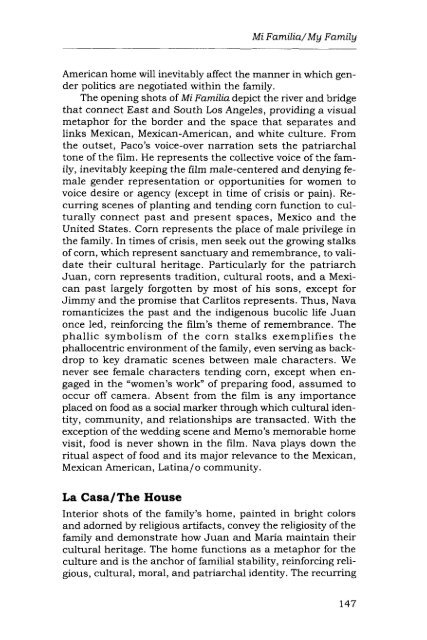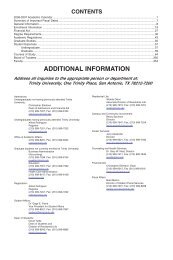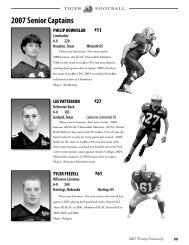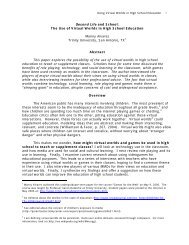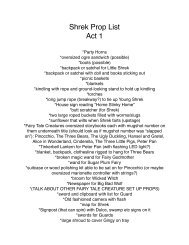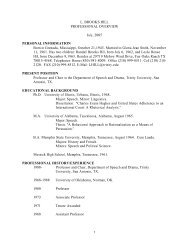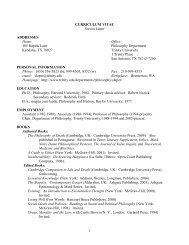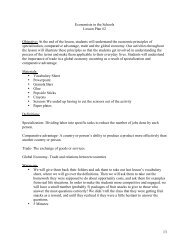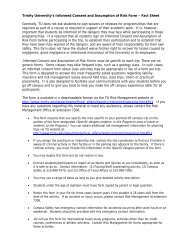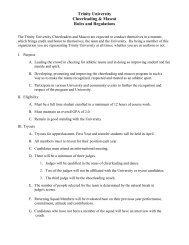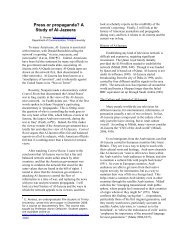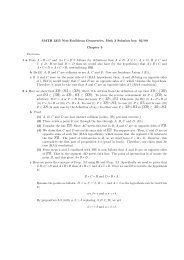Reviews - Trinity University
Reviews - Trinity University
Reviews - Trinity University
You also want an ePaper? Increase the reach of your titles
YUMPU automatically turns print PDFs into web optimized ePapers that Google loves.
Mi Familia/My Family<br />
American home will inevitably affect the manner in which gender<br />
politics are negotiated within the family.<br />
The opening shots of Mi Familia depict the river and bridge<br />
that connect East and South Los Angeles, providing a visual<br />
metaphor for the border and the space that separates and<br />
links Mexican, Mexican-American, and white culture. From<br />
the outset, Paco’s voice-over narration sets the patriarchal<br />
tone of the film. He represents the collective voice of the family,<br />
inevitably keeping the film male-centered and denying female<br />
gender representation or opportunities for women to<br />
voice desire or agency (except in time of crisis or pain). Recurring<br />
scenes of planting and tending corn function to culturally<br />
connect past and present spaces, Mexico and the<br />
United States. Corn represents the place of male privilege in<br />
the family. In times of crisis, men seek out the growing stalks<br />
of corn, which represent sanctuary and remembrance, to validate<br />
their cultural heritage. Particularly for the patriarch<br />
Juan, corn represents tradition, cultural roots, and a Mexican<br />
past largely forgotten by most of his sons, except for<br />
Jimmy and the promise that Carlitos represents. Thus, Nava<br />
romanticizes the past and the indigenous bucolic life Juan<br />
once led, reinforcing the film’s theme of remembrance. The<br />
phallic symbolism of the corn stalks exemplifies the<br />
phallocentric environment of the family, even serving as backdrop<br />
to key dramatic scenes between male characters. We<br />
never see female characters tending corn, except when engaged<br />
in the “women’s work” of preparing food, assumed to<br />
occur off camera. Absent from the film is any importance<br />
placed on food as a social marker through which cultural identity,<br />
community, and relationships are transacted. With the<br />
exception of the wedding scene and Memo’s memorable home<br />
visit, food is never shown in the film. Nava plays down the<br />
ritual aspect of food and its major relevance to the Mexican,<br />
Mexican American, Latina/o community.<br />
La Casa/The House<br />
Interior shots of the family’s home, painted in bright colors<br />
and adorned by religious artifacts, convey the religiosity of the<br />
family and demonstrate how Juan and Maria maintain their<br />
cultural heritage. The home functions as a metaphor for the<br />
culture and is the anchor of familial stability, reinforcing religious,<br />
cultural, moral, and patriarchal identity. The recurring<br />
147


